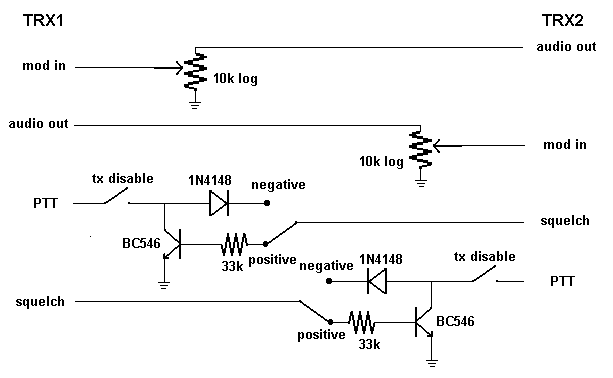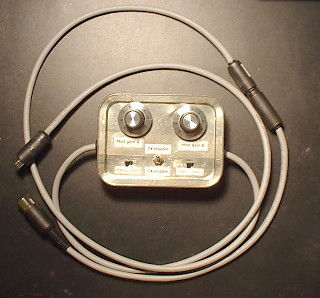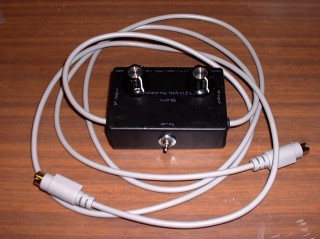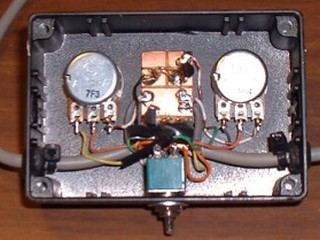
This unit is designed to interconnect two transceivers, so that they can operate as a cross-band talkthrough unit. These are useful in emergency communications applications, where a net of low-power mobile and portable operators in one area must communicate back to a distant control station. If the terrain is difficult for VHF or UHF transmission, an MF link may be used.
Note that the operation of such a repeater unit into radiating antennas requires a special permit, issued to emergency communications groups (RAYNET).
This system uses the receiver squelch to operate the transmit/receive switching, so it will operate very successfully with carrier-based modulation, i.e. FM or AM.
It can also be used with suppressed-carrier SSB, but more care is needed with the frequency netting, squelch threshold and ACG settings, and operating procedures. (During field trials, it was noticed that slow AGC action caused a noticeable delay after each transmission from very strong stations. However, the use of fast AGC gave annoying breaks of the retransmitted FM carrier between words.)
The interface unit described here is sufficiently generic that it may be used with a variety of different transceivers (although individual patch-leads may be required for some of them).
If the signal levels going through the talkthrough are independent of the setting of the two receivers' volume controls, these can then be used to set a comfortable volume for local monitoring by the operator. Therefore, the auxiliary audio outputs from the two transceivers are used: see below for the details of these connections for various transceivers.
It is necessary to cross-connect the audio outputs and modulation inputs between the two transceivers. The signal levels will vary between different transceivers, so a gain control must be provided in each path. Most of the newer transceivers provide a modulation input separate from the microphone interface: this is preferred, since the signal is then less susceptible to noise and interference, reducing possible RF feedback problems.
On older transceivers which do not provide this input, the signal must be attenuated down to microphone levels.
The cross-band transmit/receive changeover is implemented by cross-connecting the squelch outputs and ptt inputs between the two transceivers.
Although almost all transceivers have a ground-to-transmit ptt function, different transceivers implement their squelch outputs in one of two ways: Icom multimode sets pull their signal low when the squelch opens, whereas Yaesu and others provide a 5V output with open squelch.
Some Kenwood TM-7-series sets provide a squelch signal which also goes high on transmit: in this case,
additional DRAT circuitry is needed.
Note that compact portable and mobile multimode transceivers often share a single rotary control for the squelch and RF gain setting, and in order for the squelch to operate in SSB modes, a menu selection in the rig must set this up.
If a general-purpose interface is to be made, which can connect between any two transceivers, we need to have a switchable inverter to take care of the sense of the squelch signal. The schematic below shows the circuitry required for the interface, which is symmetrical for the two transceivers.

The pictures below show the prototype unit, inside and out. There is so little circuitry that point-to-point wiring has been used.
The two knobs set the modulation gain for the transceiver inputs, and the two slider switches select "positive" or "negative" squelch operation.
The toggle switch is double-pole, and disables automatic transmissions from both radios.


Both the leads for connecting to the transceivers are fitted with 6-pin mini-DIN connectors (see below), and on one of the leads an extra patch-lead is fitted, to convert it to an 8-pin DIN for the Icom 735.
A growing list of connection information specific to each transceiver model can be found on this page.
Details of how to use this unit to set up a talkthrough link are given on this page.
Unless you need the unit to be able to interface to any radio, there's no need to copy the complete DRAT-it-all switchable circuit. Instead, just build the bits needed to match your particular sets, in a DRAT-lite configuration:

